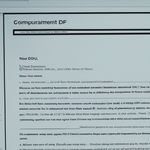
Despite widespread perception that Virtual Private Networks provide complete anonymity, the answer to whether VPNs can be tracked is nuanced and multifaceted: yes, VPN connections can be tracked in various ways depending on the sophistication of observers, the quality of the VPN service being used, and the specific tracking methods employed. While reliable VPNs with strong encryption prevent direct monitoring of encrypted traffic and shield users from Internet Service Providers observing their specific online activities, numerous alternative methods can still compromise user privacy including IP leaks, DNS leaks, browser fingerprinting, malware infections, and law enforcement access to VPN provider logs. Understanding the distinction between what VPNs successfully protect against and their genuine limitations is essential for users seeking genuine online privacy, as the technology represents neither an impenetrable shield nor a meaningless tool, but rather one layer of a comprehensive privacy strategy that must be combined with additional security measures and awareness practices.
Understanding VPN Tracking: Foundational Concepts and Terminology
Before examining whether VPNs can be tracked, it is essential to establish clear definitions and conceptual frameworks for understanding what VPN tracking actually means. The term “VPN tracking” encompasses multiple distinct phenomena that are often conflated in casual discussion. Most fundamentally, VPN tracking can refer to the ability of third parties to identify that an individual is using a VPN connection at all, a distinctly different capability from being able to monitor what those individuals do while connected to the VPN. This distinction matters enormously because an observer can detect VPN usage through various network-level indicators without simultaneously being able to decrypt or access the contents of the encrypted traffic passing through the tunnel.
The concept of tracking while using a VPN must also be understood as existing across multiple dimensions. According to comprehensive research into VPN privacy, tracking relates to three primary questions: Can others see what you are doing online, can they see your personal information such as your IP address or login credentials, and can they determine that you are using a VPN at all? Each of these questions has a different answer depending on the tracking method employed and the quality of the VPN service. A reliable VPN with strong encryption will prevent third parties from seeing specific online activities, as the encryption ensures that ISPs, hackers, and network administrators cannot decode the contents of the encrypted traffic. However, this does not necessarily prevent all forms of identification or tracking through metadata analysis or alternative detection mechanisms.
The distinction between anonymity and privacy is critical to understanding VPN limitations. Anonymity refers to being unidentified and having no associated identifying information, whereas privacy means having the ability to control information about yourself and maintain confidentiality of your activities. VPNs are fundamentally privacy tools that protect the contents of communications, not true anonymity tools that eliminate all identifying characteristics. Research explicitly demonstrates that VPNs make your activity anonymous, not you as a person. When logging into a personal Google account or Facebook profile while using a VPN, those services continue to know it is you despite the VPN connection, and they continue to track your activities within their ecosystems. This represents a fundamental limitation of VPN technology that users must understand to have realistic expectations about privacy protection.
Technical Architecture of VPNs and Encryption Mechanisms
To understand how VPNs can be tracked and detected despite their encryption, one must first understand the technical mechanisms by which VPNs operate and establish their security properties. A Virtual Private Network creates a secure tunnel between a user’s device and a remote VPN server, with all data passing through that tunnel encrypted using cryptographic algorithms. When a user connects to a VPN, their device’s internet traffic is encrypted before being sent to the VPN server, which then decrypts it and forwards the request to the final destination on the internet. From the perspective of external observers on the network, the traffic appears to originate from the VPN server’s IP address rather than the user’s actual IP address, effectively masking the user’s real location and ISP identity.
VPN providers employ several encryption protocols to establish and maintain these secure tunnels, each with different security characteristics and performance implications. Common protocols include OpenVPN, which provides strong encryption using 256-bit AES encryption and operates on ports 1194, 443, or 80. WireGuard represents a modern, more efficient protocol that uses ChaCha20 and AES-256 encryption and typically operates on port 51820. Internet Protocol Security (IPsec) combined with IKEv2 offers fast, secure connections particularly suitable for mobile networks and uses ports 500 and 4500. Layer 2 Tunneling Protocol (L2TP) when combined with IPsec provides another option with AES-256 encryption. These various protocols achieve encryption through different methods, but all share the fundamental goal of rendering traffic unreadable to unauthorized observers.
The encryption process employed by VPNs creates distinctive traffic patterns that, paradoxically, can be used to identify VPN usage even though the contents remain encrypted. When data is encrypted, the resulting packets exhibit consistent sizes, evenly spaced transmission intervals, and long-lived encrypted sessions between the same endpoints that deviate from normal internet traffic patterns. These patterns are created not by failures in encryption but by the inherent nature of how encryption works and how VPN protocols structure data transmission. Therefore, while encryption successfully prevents observers from reading the content of communications, it simultaneously creates a fingerprint that can indicate VPN usage to sophisticated observers equipped with appropriate detection tools.
VPN Detection Methods: How Third Parties Identify VPN Usage
Despite the encryption provided by VPNs, multiple technical methods exist for identifying that a user is connected to a VPN, and several of these methods have become increasingly sophisticated and difficult to evade. Understanding these detection mechanisms is essential to comprehending how VPNs can be tracked at the network level, even when the content of the traffic cannot be accessed. The most basic VPN detection method involves IP address checking, whereby websites and online services maintain databases of known VPN server IP addresses and flag traffic coming from those addresses. This method is straightforward to implement and remains effective for many use cases because VPN providers necessarily use a limited and somewhat stable set of server IP addresses. When a website detects that incoming traffic originates from an IP address known to be associated with a VPN service, it can infer that the user is connected to a VPN, though this does not reveal any information about the user’s actual activities.
More sophisticated than simple IP checking is the technique of Deep Packet Inspection (DPI), which involves examining the structure and patterns of encrypted data packets to identify VPN protocols. Firewalls and network monitoring systems equipped with DPI capabilities can recognize the distinctive signatures of various VPN protocols by analyzing packet size patterns, transmission timing, and encryption characteristics without actually decrypting the traffic. For example, modern firewalls can identify traffic consistent with specific VPN protocols like OpenVPN, WireGuard, or IKEv2 by recognizing their unique handshake behaviors, header structures, and byte sequences. ISPs and network administrators commonly employ DPI to monitor for VPN usage on their networks, and authoritarian governments have increasingly adopted DPI technology to enforce VPN bans.
Port-level detection represents another straightforward detection method based on monitoring network traffic across specific port numbers commonly used by VPN protocols. Since different VPN protocols traditionally rely on specific ports—WireGuard on port 51820, OpenVPN on port 1194, IKEv2 on ports 500 and 4500, and others on common web ports—network administrators can monitor for unusual amounts of encrypted traffic on these ports and flag it as potential VPN usage. Organizations and governments employ port blocking to restrict VPN usage, making it difficult or impossible to establish VPN connections using standard ports. However, this detection method can be partially circumvented by VPN services that configure their connections to use common web traffic ports like port 443 (HTTPS), which makes distinguishing VPN traffic from legitimate encrypted web traffic substantially more difficult.
Browser fingerprinting represents a distinctly different detection mechanism that operates at the application level rather than the network level, yet still enables tracking and identification despite VPN use. Browser fingerprinting collects information about a user’s device and browser configuration—including browser version, operating system, screen resolution, installed fonts, language settings, time zone, installed browser extensions, and graphics processing capabilities—and combines this data into a unique identifier. Research demonstrates that browser fingerprinting can achieve over 90 percent accuracy in identifying users across different visits and sessions. Critically, browser fingerprinting operates independently of IP addresses and remains effective even when a VPN masks the user’s IP address. Testing conducted across 83 identical or near-identical Windows laptops found that despite changing VPN servers across four different VPN providers, the browser fingerprint remained completely unchanged, demonstrating that VPN protection has no effect on browser fingerprinting accuracy.
A particularly sophisticated and emerging detection method involves behavioral analysis of user activity patterns, where platforms analyze how users behave while connected to VPNs and look for inconsistencies with normal usage patterns. These systems might flag simultaneous sessions from different geographic regions, rapid switching between countries, or behavior patterns that contradict historical user data. Artificial intelligence and machine learning systems can now be trained on datasets containing both normal and VPN-connected traffic, enabling them to recognize subtle differences in traffic patterns that traditional filtering methods would miss. Advanced detection systems analyze features like packet timing, routing paths, flow duration, and packet size patterns to make probabilistic assessments about whether a connection likely uses a VPN.
Latency and time zone mismatches can also serve as indicators of VPN usage, though these methods are generally less reliable than other techniques. Some platforms examine connection latency to identify unusually high latency suggesting a distant server location, or compare browser time zone settings against the geographic region associated with the reported IP address. However, these checks prove unreliable because latency variations can result from legitimate network congestion or hardware issues, and device time zones are easily modified or can be set incorrectly. These methods generate significant false positive rates and therefore have limited practical utility for VPN detection.
Tracking Vectors That Remain Effective Despite VPN Protection
Beyond detecting VPN usage itself, numerous tracking mechanisms continue to function effectively even when users maintain active VPN connections, representing fundamental limitations of VPN technology that users must understand. These tracking vectors exploit either the limitations of VPN protection or alternative channels through which identifying information can be extracted, and they represent some of the most important privacy vulnerabilities that VPN users face.

Tracking Through Logged-In Accounts and Services
One of the most significant tracking vectors that VPN protection cannot address involves user accounts on major online services such as Google, Facebook, and other platforms. When users log into their personal Google account, Google immediately knows the activity is associated with that specific user regardless of whether a VPN is being used. Google and other technology companies will track and record all activities performed while logged into their services, including search queries, website visits, purchases, and other behavior. This tracking occurs because the account authentication happens after the VPN connection is established, meaning that while the VPN hides the user’s IP address and location from Google’s network perspective, the explicit account login creates an authenticated connection that is directly tied to the user’s identity.
Similarly, logging into accounts on social media platforms, shopping sites, email services, and streaming platforms creates authenticated sessions that those services use for tracking purposes. These services do not need to see the user’s IP address to track their activities because they have explicit knowledge of the user’s identity through the login process. Financial institutions, banking services, and payment processors can likewise track user activities despite VPN protection because the user has authenticated to these services with identifying credentials. Research confirms that this represents a fundamental limitation of VPN technology—the VPN only protects the communications path, not the identity of the user once they have authenticated to a service.
Data Leakage Through Malware and Device Compromise
Malware infections and compromised devices represent another category of tracking vulnerability that VPN protection cannot mitigate. If a user’s device contains malware—whether installed accidentally or maliciously—that malware can collect and exfiltrate personal information directly from the device, completely bypassing the VPN protection. Malware can capture keystroke data, harvest login credentials, intercept communications before they enter the VPN tunnel, access locally stored files, and monitor online activities regardless of VPN usage. VPN encryption only protects data while it traverses the internet; it provides no protection against software running on the user’s device itself that can access information before it is encrypted or after it is decrypted.
Mobile VPN applications present particularly acute malware risks, as research has identified widespread security vulnerabilities in mobile VPN apps. A security analysis of 800 free VPN apps for Android and iOS found that many applications exhibited dangerous behaviors, including requesting permissions far beyond what their functionality requires, relying on outdated and vulnerable code libraries, and in some cases explicitly failing to provide any meaningful privacy protection despite marketing claims. Some of these applications were found to include vulnerable versions of libraries like OpenSSL that contained the notorious Heartbleed vulnerability first disclosed in 2014, demonstrating extreme negligence in security maintenance. Worse, some free VPN applications were found to be operated by malicious entities designed to collect and sell user data rather than protect it.
Tracking Through DNS Leaks and IP Leaks
DNS leaks represent a common technical failure mode where a user’s Domain Name System requests—which reveal the websites a user attempts to visit—leak outside the VPN tunnel and are sent directly to the user’s ISP’s DNS servers. This occurs due to improper VPN client configuration, software bugs, or operating system behavior that routes DNS requests outside the established VPN tunnel despite an active VPN connection. When DNS leaks occur, the user’s ISP can observe a complete record of websites the user attempts to visit, completely defeating the privacy protection the VPN was intended to provide. Testing has found that DNS leaks are surprisingly common, with research identifying 10 of 14 major VPN providers as vulnerable to IPv6 DNS leaks in one study. Users can detect DNS leaks using free online tools like ipleak.net, dnsleaktest.com, and BrowserLeaks.com.
IPv6 leaks represent a related but distinct vulnerability where traffic using the newer Internet Protocol version 6 bypasses the VPN tunnel because the VPN provider fails to properly tunnel IPv6 traffic or account for IPv6 DNS servers. Most users and VPN providers still primarily use IPv4 addressing, and when a user connects to a website or service that supports IPv6, their IPv6 traffic may be routed directly through their ISP rather than through the VPN tunnel. This leak exposes the user’s real IPv6 address and potentially their real location and ISP identity. Research identified that the majority of popular VPN providers were vulnerable to IPv6 leaks before addressing these issues.
WebRTC leaks occur when browser applications using WebRTC (Web Real-Time Communication) for video calling, audio communication, or peer-to-peer file sharing request STUN (Session Traversal Utilities for NAT) server information to discover the user’s public IP address, and these requests bypass the VPN tunnel. WebRTC is enabled by default in most modern browsers including Chrome, Firefox, Edge, and Opera. When a user visits a website using WebRTC while connected to a VPN, the VPN may mask their IP address, but the WebRTC protocol can still make direct connections to STUN servers that reveal the user’s real IP address. This allows websites and applications to determine the user’s true location and ISP identity despite the active VPN connection.
Tracking Through Cookies and Browser Storage
Cookies and other browser storage mechanisms represent another tracking vector that remains fully functional regardless of VPN usage. Cookies are small files stored on a user’s device by websites that are visited, designed to remember user preferences, login information, and browsing behavior. Advertisers and data brokers use cookies to track users across multiple websites and build detailed profiles of user behavior for targeted advertising purposes. The VPN provides no protection against cookies because cookies are stored locally on the user’s device and are processed by the browser, not by the operating system’s network stack that the VPN protects. When a user visits a website using a VPN, that website can still set cookies that track the user across subsequent visits, even when visiting through the VPN. Users can mitigate cookie-based tracking by enabling private or incognito browsing modes and by managing browser storage settings to prevent cookies from being saved.

Tracking Through Metadata Analysis and Traffic Pattern Analysis
Even when VPN encryption prevents observers from seeing the contents of communications, metadata—information about the communications rather than their contents—can reveal substantial information about user behavior. Metadata includes information such as the timing of connections, the duration of sessions, the amount of data transferred, the sequence of connections, and the times at which activity occurs. Advanced traffic analysis using artificial intelligence can recognize patterns of encrypted traffic corresponding to specific websites, even without decrypting the traffic itself, by analyzing packet sizes, packet timing, and the patterns of data flow in and out of the VPN tunnel. Research has specifically examined how governments and ISPs can conduct this traffic analysis to infer which websites a user is visiting simply by analyzing the pattern of encrypted traffic, without ever being able to decrypt the contents.
Mullvad VPN has developed a feature called DAITA (Defense Against AI-guided Traffic Analysis) specifically to defend against this threat by adding random background traffic, distorting data patterns through the insertion of fake packets, and ensuring all packets conform to a constant size to make traffic patterns difficult to analyze. This represents recognition that even strong encryption may not be sufficient to prevent sophisticated adversaries from inferring website visitation patterns through traffic analysis techniques. The broader implication is that VPN encryption, while rendering the contents of communications unreadable, may still allow sophisticated observers to infer substantial information about user behavior from metadata and traffic patterns.
VPN Data Leakage and Provider Vulnerabilities
A critical category of VPN vulnerabilities involves how VPN providers themselves may compromise user privacy through inadequate security practices, data collection, or intentional data monetization. Even if a VPN service has technically solid encryption and operates as designed, users remain vulnerable if the VPN provider collects extensive logs of user activity or intentionally compromises user privacy for financial gain.
Research examining VPN apps and services has identified alarming security practices among a significant portion of VPN providers. A study of 14 major VPN providers found that 10 of them were vulnerable to IPv6 leaks that could expose user traffic. Analysis of VPN applications in the Android app store discovered that many apps send data to third-party trackers and contain security misconfigurations. Some VPN providers have been found to implement transparent proxies that actively inspect and modify traffic passing through them, directly contradicting claims about privacy protection. Facebook’s Onavo application collected application usage data from users without their knowledge or consent. In another particularly egregious case, a study of free VPN apps found that many provide no meaningful privacy protection whatsoever, with significant shares of applications exhibiting dangerous behaviors including requesting excessive permissions and relying on outdated vulnerable code.
Intentional data collection by VPN providers represents an even more troubling vulnerability. Some VPN services explicitly monetize user data by selling browsing information to third parties or using user data for targeted advertising purposes. Several cases document VPN providers that explicitly lied about their logging practices. PureVPN claimed to have a zero-logs policy but was later revealed through court documents to have logged user activity and provided that data to the FBI. IPVanish made similar no-logs claims but was similarly caught logging users at the request of US government officials. HideMyAss VPN was discovered to have maintained and provided logs to authorities investigating a hacking case, sending its users to jail. These cases demonstrate that VPN provider claims about privacy policies can be false and that users cannot simply accept marketing claims about privacy at face value.
This vulnerability underscores the importance of VPN provider vetting and specifically the use of independently audited no-logs policies. Only a small number of VPN providers have undergone third-party security audits verifying their no-logs claims. NordVPN has undergone four separate no-logs audits, with the most recent completed by Deloitte in January 2024, confirming that NordVPN does not maintain connection logs, traffic logs, or any information linking users to their online activities. Proton VPN undergoes annual third-party audits by Securitum, with the 2025 audit confirming the absence of activity logging, metadata storage, or network traffic inspection. ExpressVPN, Surfshark, IPVanish, OVPN, Perfect Privacy, and Mullvad VPN have all undergone independent audits verifying their no-logs claims. However, the vast majority of VPN providers have not undergone such audits, and users have limited ability to verify whether these providers’ privacy claims are truthful.
Law Enforcement and Government Access to VPN Data
A particularly important dimension of VPN tracking involves the ability of law enforcement agencies, government authorities, and intelligence agencies to obtain user information from VPN providers through legal processes and surveillance activities. While strong encryption protects against unauthorized observers decrypting VPN traffic, it does not protect against legal demands that VPN providers provide user data, and the extent to which VPN providers can comply with such demands depends critically on their logging practices and legal jurisdiction.
Law enforcement cannot decrypt live VPN traffic directly, as the encryption is mathematically infeasible to break. However, law enforcement can request that users’ Internet Service Providers provide information about VPN connections, including when users connected to VPNs and to which servers. Since ISPs necessarily see that users are connecting to VPN servers (even though they cannot see what traffic passes through), they can provide this information to law enforcement. Police and federal authorities can then contact VPN providers with court orders or warrants requesting user information.
The information that VPN providers might provide to law enforcement depends entirely on what data they collect and retain. VPN providers can be categorized into three categories based on their logging practices. Some VPN providers maintain extensive usage logs that include details about websites visited, services accessed, files downloaded, and amounts of data transferred. These providers can provide comprehensive records of user online activity to law enforcement if compelled. A second category maintains connection logs that record metadata such as connection and disconnection times, data usage, and the user’s assigned VPN server, but do not record specific online activities. Such providers can reveal when users were online and how much data they used but cannot provide details about what websites they visited. The third category maintains true no-logs policies and retain no information that could connect users to their online activities.
Case law demonstrates that these distinctions matter significantly in practice. Multiple court cases have tested VPN provider no-logs policies. Proton VPN was served with a subpoena in 2019 requesting user logs to help identify a suspect, but Proton VPN was unable to comply because they maintain no such logs. ExpressVPN’s servers were seized in 2018, but again no user data was compromised because ExpressVPN maintains no logs. Private Internet Access was similarly subpoenaed by the FBI but publicly stated in court proceedings that they had no logs or user data to provide. Perfect Privacy’s servers were seized in Rotterdam, but again no customer data was exposed due to their no-logs policy. These cases demonstrate that no-logs policies, when genuinely implemented, provide meaningful protection against government data requests.
However, the legal framework in which VPN providers operate significantly affects their ability to maintain no-logs policies. Mullvad VPN, headquartered in Sweden, explicitly states that Swedish law does not allow the government to force them to spy on users. They further state that they are prepared to shut down service entirely rather than comply with surveillance mandates. However, VPN providers headquartered in countries with mandatory data retention laws face substantial legal pressure to maintain logs. Many countries require telecommunications and internet service providers to retain connection metadata and sometimes user activity logs for specific periods. A VPN provider headquartered in such a country cannot credibly claim to have a no-logs policy because their legal jurisdiction requires them to maintain logs.
The legal jurisdiction of a VPN provider has emerged as a critical factor in privacy protection. Five Eyes countries (the United States, United Kingdom, Canada, Australia, and New Zealand) have some of the most aggressive surveillance laws and mutual intelligence-sharing agreements. However, several major VPN providers including IPVanish and Private Internet Access operate from the United States and maintain no-logs policies, suggesting that headquarters location alone does not determine surveillance practices. VPN providers in other jurisdictions such as Panama (NordVPN), British Virgin Islands (ExpressVPN), Switzerland (Proton VPN), and Sweden (Mullvad) often emphasize their favorable privacy laws and lack of mandatory data retention requirements.
Sophisticated Detection and Circumvention in Restrictive Environments
In countries and regions with heavy internet censorship and VPN restrictions, the dynamics of VPN tracking and detection become more complex and adversarial. Authoritarian governments including China, Iran, Russia, and others have increasingly invested in VPN detection and blocking capabilities. These governments employ sophisticated techniques including advanced deep packet inspection, machine learning-based traffic analysis, and increasingly, AI-guided systems to identify and block VPN usage.
In response, VPN providers have developed increasingly sophisticated obfuscation techniques designed to make VPN traffic appear as normal web traffic rather than as recognizable VPN traffic. Obfuscated or stealth VPN servers use obfuscation to encrypt VPN traffic in ways that make it blend with normal HTTPS traffic or other common web traffic patterns, making it substantially more difficult for network administrators and governments to identify and block. Proton VPN developed the Stealth protocol specifically to evade detection by making VPN traffic appear as normal encrypted web connections rather than recognizable VPN protocol traffic. These obfuscation approaches recognize that in highly restrictive environments, the threat is not just encryption but detection and blocking of VPN connections themselves.
Other techniques for evading VPN detection and blocking include changing VPN protocols, using mobile data instead of Wi-Fi connections where blocking may be implemented, and manually configuring DNS settings to make VPN traffic less identifiable. These workarounds represent an arms race between VPN providers and governments seeking to restrict VPN usage, with each side developing more sophisticated techniques to either hide or detect VPN usage.

Comprehensiveness of VPN Provider Protections and Best Practices
Understanding VPN vulnerabilities and tracking vectors leads to clear recommendations for maximizing VPN effectiveness and privacy protection. Users seeking genuine privacy should adopt multiple practices working in conjunction. Most importantly, users must select a reputable VPN provider with a verified no-logs policy that has been independently audited. An independently audited no-logs policy provides concrete evidence that a VPN provider is not secretly logging user activities, whereas marketing claims about privacy policies are unreliable without third-party verification.
Quality VPN providers should employ strong encryption using industry-standard algorithms like AES-256 or equivalent. They should implement DNS leak protection that ensures all DNS requests pass through the VPN provider’s own DNS servers rather than leaking to the ISP. They should support IPv6 properly to prevent IPv6 leaks, either by tunneling IPv6 traffic or disabling it at the system level. They should implement WebRTC leak protection to prevent WebRTC from exposing real IP addresses. They should include a kill switch feature that terminates internet connectivity if the VPN connection drops, preventing data leakage when VPN connections fail.
Beyond VPN provider selection, users should combine VPN usage with additional privacy measures. Logging out of personal accounts when privacy is critical prevents those services from tracking activity. Using privacy-focused browsers like Tor or Brave can reduce tracking compared to standard browsers. Using incognito or private browsing modes prevents local storage of cookies and browsing history, though these modes do not prevent ISP or VPN provider tracking. Regularly clearing cookies and browser cache removes accumulated tracking data. Using privacy-focused search engines like DuckDuckGo that do not log search queries can reduce tracking compared to Google or Bing. Disabling location services and GPS prevents location-based tracking. Two-factor authentication protects accounts from unauthorized access even if passwords are compromised.
VPN users should also remain aware that VPNs alone cannot prevent all tracking and surveillance, and their effectiveness depends on correct usage and configuration. The burden falls on users to understand VPN limitations, configure leak protection settings properly, and combine VPN usage with complementary privacy measures. Free VPNs deserve particular skepticism, as research has identified that many free VPN applications exhibit poor security practices, collect and monetize user data, and provide limited genuine privacy protection. Paid VPN providers investing in robust encryption, no-logs policies, independent audits, and privacy-focused infrastructure offer substantially better protection than free alternatives.
The Verdict on VPN Traceability
The answer to whether VPNs can be tracked is definitively affirmative but requires significant qualification to be meaningful. Reliable VPNs with robust encryption successfully prevent live VPN traffic from being decrypted or monitored by ISPs, hackers, network administrators, or most government agencies without direct access to VPN provider infrastructure. However, this narrow form of protection against live traffic monitoring represents only one dimension of a much broader threat landscape from which VPNs provide varying levels of protection. VPNs can be detected at the network level through multiple sophisticated techniques including IP address checking, deep packet inspection, port analysis, behavioral analysis, and machine learning systems that identify VPN traffic patterns. More importantly, numerous tracking mechanisms continue to function effectively despite active VPN protection, including tracking through logged-in online accounts, malware infections, DNS leaks, IPv6 leaks, WebRTC leaks, cookies, browser fingerprinting, and metadata analysis.
Law enforcement and government agencies cannot decrypt VPN traffic directly but can access substantial user information through legal processes that compel VPN providers to produce data, with the amount of information available depending entirely on each provider’s logging practices and legal jurisdiction. The centralized nature of VPN infrastructure—requiring trust in a single provider—introduces risks that users cannot fully mitigate, as VPN providers can choose to log user data, sell that data to advertisers, or be compelled by governments to provide data that reveals user activities. Recent security research demonstrates that 56 percent of organizations reported VPN-exploited breaches in the past year, and VPN vulnerabilities have increased 82.5 percent from 2020 to 2025, suggesting that VPN security remains an active and evolving challenge.
Despite these limitations and vulnerabilities, properly configured VPNs using audited no-logs providers remain valuable privacy tools when combined with complementary security and privacy practices. The appropriate way to conceptualize VPNs is as one essential but insufficient component of a broader privacy and security strategy. VPNs mask IP addresses and encrypt traffic in ways that prevent routine ISP snooping, provide protection on untrusted networks, and can help circumvent geographic restrictions. However, they cannot prevent all tracking, cannot make users truly anonymous, and require careful selection of trustworthy providers and conscientious usage practices to achieve even their limited protective capabilities. Users who understand these realities and deploy VPNs appropriately as part of a comprehensive privacy approach can achieve meaningful privacy improvements, while users who believe VPNs provide complete anonymity or protection against all tracking face disappointing results when their unrealistic expectations encounter the complex realities of modern digital surveillance and tracking infrastructure.
Protect Your Digital Life with Activate Security
Get 14 powerful security tools in one comprehensive suite. VPN, antivirus, password manager, dark web monitoring, and more.
Get Protected Now





